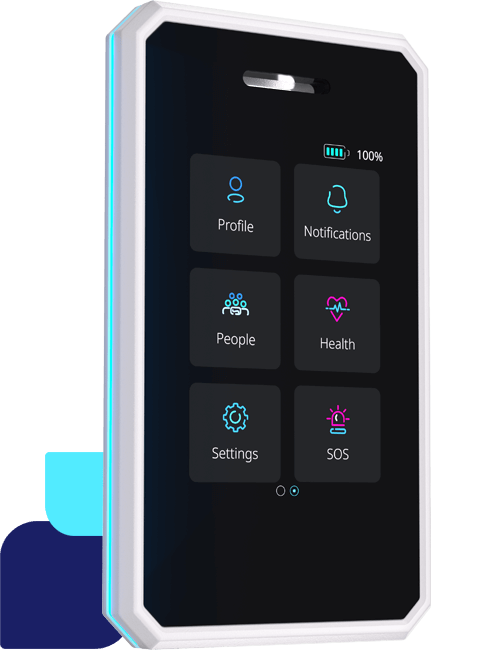Company equipment (sometimes referred to as assets) can be expensive. Repairs and replacements alongside unforeseen related expenses can add up quickly if you don’t pay attention. So, how do companies keep track of how much equipment they need? Where it’s kept, or how it’s maintained? Do they really know if there is room to cut costs or gain efficiencies?
Thankfully, there is technology available that can help. In this article, we explore how real time location solutions can help employees locate equipment on-site when they need it, monitor employee usage of equipment, as well as schedule repairs or replacement.
Finding equipment when it’s needed
Tracking the location of equipment is one thing, and lots of systems can track and monitor equipment at regular intervals. But did you know that a real time location system, such as Sense, can not only monitor the location of equipment at regular intervals, but can help your employees locate and get directions to the nearest available piece of equipment too? All in real time.
Employees working on larger sites will find this particularly useful. For example, a warehouse operative looking for a pallet trolley, or maybe a nurse trying to find a heart rate monitor, or perhaps a construction worker trying to find a jackhammer.
Being able to find equipment, and ensuring it isn’t left behind on a customer site, or on the back of a lorry, can help eliminate unnecessary replacement costs, expedite maintenance, and reduce time spent away from core responsibilities and tasks.
Monitoring usage
There are many reasons to track usage. First and foremost: regulation. For example, in construction, rules about the use of vibrating equipment can limit the length of time an employee can use a piece of machinery, such as a jackhammer. Being able to track how long an employee has been using a jackhammer can trigger an alert to the employee to tell them to stop. This can help prevent accidents, injuries, or costly lawsuits.
The second reason is to ensure all equipment is actively used before replacing or relocating. There’s little point to replacing unused equipment unless the equipment is needed for safety reasons – but we’ll cover that shortly.
Thirdly, security can be improved by monitoring equipment usage. Was the equipment stored away properly after it was used? Unnecessary replacement, or insurance costs can be mitigated by alerting employees when equipment is unattended or in the wrong location after use.
Fourth and finally, a great reason to track where and when employees are using equipment, is so you can schedule maintenance as and when it’s needed. This helps to minimise downtime alongside preventing replacement costs. Tracking equipment usage allows you to know when replacements are due, for example you can schedule maintenance based on time elapsed, such as visual checks of safety equipment every 30 days or annual replacements. You can also schedule maintenance when a piece of equipment reaches a usage limit. For example, a battery on a device needs recharging after every use, or a part within a tool needs to be replaced every 100 uses. A real time location system such as Sense produces a data trail that demonstrates scheduled maintenance, alongside maintenance reports – generated when repairs or inspections are completed. This leaves an auditable trail for management to inspect, as well as external regulators like health and safety inspectors or assessors, such as ISO or B Corp.
Scheduling maintenance or replacement
If you work in operations, you know how important it is to keep things running smoothly without any interruptions. Even small disruptions can seriously impact productivity, and that’s bad news for your bottom line.
An RTLS allows you to track your equipment and schedule maintenance at the best possible time and place. This means less downtime and lower costs, which is always a good thing. Plus, by preventing damage to your equipment, you can avoid even more expenses. The other benefit is better budget planning by knowing how frequently equipment is used and assigning the right budget based on the maintenance cycle required.
Another perk of proper maintenance scheduling is that it can help improve workplace safety. By reducing the risk of faulty equipment, you’re making your workplace a safer place for everyone. So, by using RTLS technology, you can manage maintenance and replacement in a proactive way that boosts efficiency and keeps everything running smoothly.
Getting back to replacing (or not replacing) unused equipment, using RTLS allows you to identify where to spend budget, and where equipment spend is no longer required. Unless, of course, equipment is tagged in the system as needed for safety reasons, unused equipment can be removed. This helps to prevent unnecessary spend and maintains the status quo of up-to-date safety equipment in the correct locations.
Talk to Sense about cutting costs and increasing efficiency
As costs of business rise, reducing costs of equipment by tracking location and usage with RTLS could make a significant difference to your company’s financial wellbeing, it could improve safety in the workplace, as well as increase productivity and overall efficiency. Speak to Sense to find out more about how your company can implement equipment tracking.







